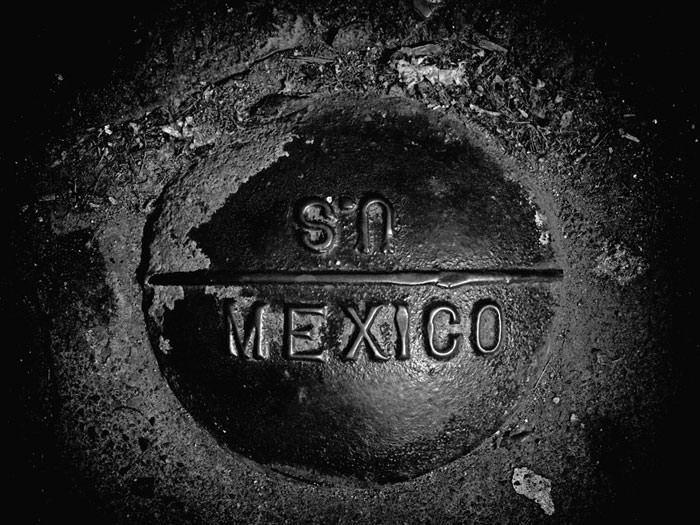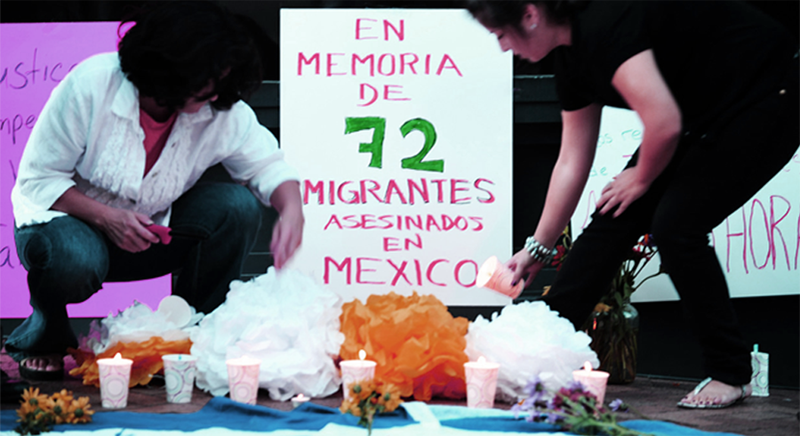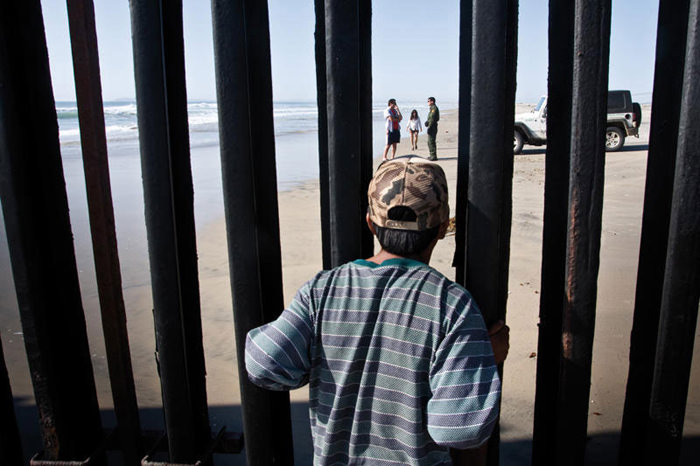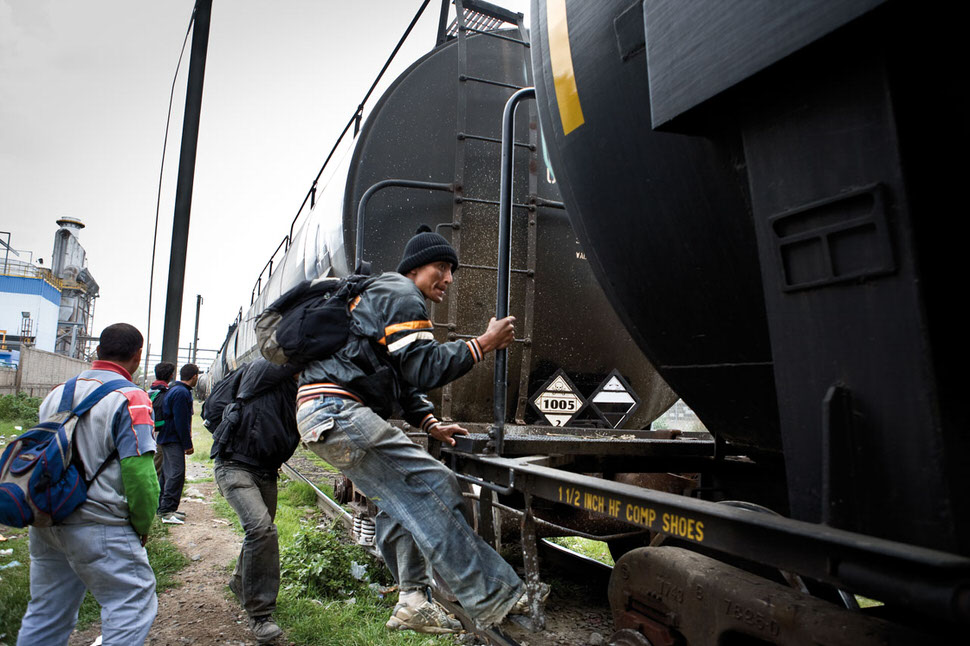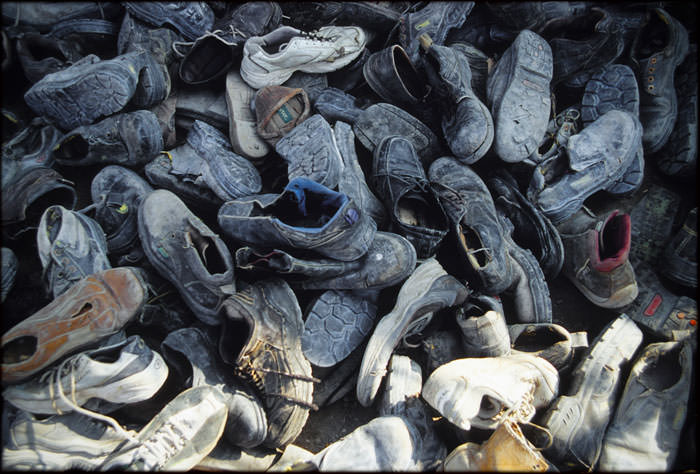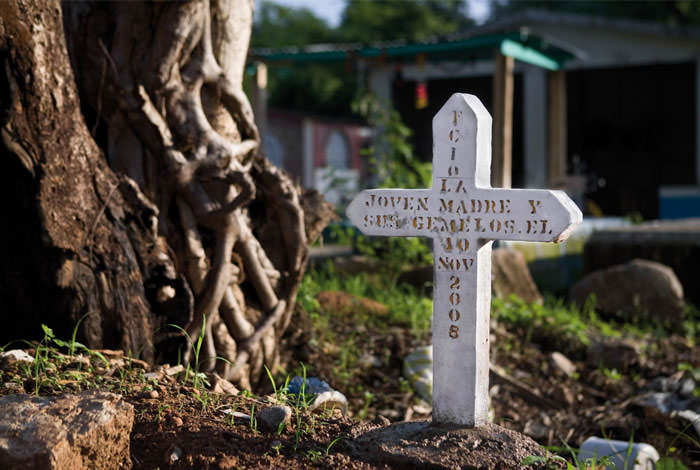When it was established in the late nineteenth century, Labor Day was intended to honor the American working man. Yet a great deal of our menial labor today is performed not by American citizens but by undocumented migrant workers—many of whom risk their lives in thousand-mile journeys simply to get to the United States. A year ago this August, 72 of those migrants—58 men and 14 women—were on their way to the US border when they were murdered by a drug gang at a ranch in northern Mexico, in circumstances that remain unexplained. Since then, a group of Mexican journalists and writers have created a website (since archived), 72migrantes.com, to commemorate each of the victims, some of whom have never been identified. What follows is a selection of English translations of their work. —The Editors
#26: Julián Sánchez Benítez
by Thelma Gómez Durán (translated by Tania Espinal)
Saturday August 7, 2010. Julián Sánchez Benítez woke up before dawn. He bathed and put a couple of shirts in his backpack. This was when Juana Benítez, his mother, knew that her son was leaving for the United States. She only got the chance to give him some tortillas. He said goodbye with one sentence: “Ai los vidrios, madre.” (“See you later, mother.”) Julián was born on May 19, 1993, in San José Comayagua, Honduras. He was 17 years old.
His parents separated, and he went with his mother to San Pedro Sula. He grew up listening to people say “there’s no work” and watching his cousins, neighbors and friends leave town. “They went to the United States,” people used to say to him when he asked. Each year, about 150,000 Hondurans follow the path to the North. The idea of going to the United States got into his mind, because once there he would be able to earn the 45,000 Honduras Lempiras—more than $2,500 dollars—that he needed for the small piece of land he was paying off in monthly installments. He wanted to build a house, but the little that he was earning as a mason’s assistant was barely enough. To make things worse, this year he was hearing the phrase “there’s no work” more often. At 17 he went to look for another future. He left his friends from the Instituto Nuevo Amanecer, where he was a junior, behind in Honduras. He left his passion for soccer, the evangelical church where he used to sing, his siblings—Wilfredo, 25, and Iris, 19—and he left Juana, his mother. He took with him the 1,000 Honduran Lempiras that he had saved to make the monthly payment on the piece of land and left with his cousin José Giovanni Gonzalez, who was 22 years old.
Days later, on September 2, 2010, Juana Benítez was sweeping her house and listening to the radio when the announcer began to read the names of the Honduran immigrants killed at a ranch in Tamaulipas, Mexico. “Julián Sánchez Benítez” he said but Juana refused to hear. The speaker completed “from San José Comayagua,” and then Juana realized that it was her son. Julián Sánchez was buried in the municipal cemetery of Choloma and before the funeral his friends paid tribute to him by playing a soccer game in which his brother Wilfredo scored three goals. In the cemetery his friends held a sign that read: “We compañeros don’t want immigration, we want fair jobs.”
#2: Víctor Manuel Escobar Pineda
by Juan Villoro (translated by Lydia Arias)
For twenty years, Víctor Manuel Escobar Pineda worked in the United States. He was a contractor for a Houston company and employed fellow Hondurans. His mother, wife, and five children lived with him. The youngest was 2 years old, the oldest 15. They lived well. This was just, but it was illegal.… In May of 2010 Víctor Manuel had a problem with his papers. He had led a decent life, but he was born in Honduras. He was deported. He immediately planned his return. In San Pedro Sula there was good mondongo soup but in Houston the mondongo soup was made by his mother. He set off in August. His uncle Contalicio Barahona traveled with him. They passed through Mexico without seeing anything but the fear in the eyes of their companions. Near the border they were detained by drug gangs, who offered them a different illegal job. But he wanted work without deaths. An honest job for someone without papers. He never hoped for the luxury of a justice that would also be legal. On August 23, seventy-two immigrants were murdered.…Víctor Manuel Escobar Pineda closed his eyes, shot down in Tamaulipas. He was 36 years old. He was buried in San Pedro Sula. His children traveled from Houston to the burial. His uncle also died in the massacre. At Cantalicio’s funeral mass the priest recalled what Saint Paul wrote: “We are citizens of heaven.” In Houston the NASA space station protects the citizens of heaven. Those who build the houses there have no papers.
Advertisement
# 13: Wilmer Antonio Velásquez
by Enrique Díaz Álvarez (translated by Jada Claiborne)
I guess I should start by saying that Wilmer Antonio Velásquez was a native of El Salvador who grew up in the small village of La Maltez, in the canton of Cercos de Piedra, in the jurisdiction of San Alejo, in the department of La Unión. I could also say that Wilmer grew up surrounded by the wreckage of a civil war in which more than 75 thousand people died. Well, let’s just say that Wilmer was raised by his grandparents in a village that rears immigrants.
In the municipality of San Alejo there exist two health clinics, 31 primary schools, two high schools, and one university. There are also five Catholic churches, five Evangelical churches, three self-help groups, four sports fields, a cultural center, a park, and two offices of tourism called La Montañita and El Oasis. In addition, there are four bars, four pool halls and possible plans for a brothel.
But Wilmer didn’t count the public services and nightspots of the area, he counted the days. When he was 16 he liked to while away the time when he was told to go collect water. The routine was simple: after hanging the white bucket on the tree next to the front door, he would climb up the fence of his house to watch the sunset and the young ladies pass by. There, as the ladies and the sun disappeared from view, Wilmer thought about the 10th of August. On that day, like 473 other Salvadoran citizens, he was going to escape the country to go and live with his parents in Long Island, New York.
The night before, Wilmer hardly slept; he listened to his grandmother crying and waited with a tiny suitcase for the coyote to come for him. He very quietly crossed Guatemala and the south of Mexico. Listening. Although he was among the youngest, Wilmer was not afraid until, along with 72 other immigrants, he was kidnapped in Tamaulipas by Los Zetas. There, only an hour and a half from the United States border, they took his life.
#59: Sabas Ramón Oliva
by Emiliano Ruiz Parra (translated by Flora Thomson-DeVeaux)
In El Quebrachal, Honduras, Sabas Ramón had lived the life he was destined to. He was the oldest of nine siblings, the father of two sons and two daughters whom he baptized with Biblical names. His persistence and courage distinguished him, and not just when he played central back in soccer games. Of all his siblings he was the only one who dared to cross. The first time, he was 42. He made it to Houston, Texas and found work in a Chinese restaurant where his charm got him a position as a waiter. But the American Dream, which for an undocumented Honduran means being exploited in the richest country in the world, would only last two years. He was discovered and deported. Still undeterred, he tried four more times. The first three, his son Santos Nahum tells me, he was deported by the Mexican authorities who do the dirty work of keeping illegal immigration down for the Border Patrol. The fourth time, that dirty work was done by the Zetas….Sabas Ramón wanted to spend two years in the United States, save up for a cart he could pedal around, and retire as a vendor distributing milk in his village. Plans that are now just castles in the air. What remains of Sabas Ramón Oliva, apart from memories, is a pair of soccer shoes he gave to his son Uriel before he left. Shoes to wear through the rainy season as well as the dry, because the only bridge that broke El Quebrachal’s isolation was destroyed in San Fernando, Tamaulipas.
#56: Unidentified Female Immigrant
by Myriam Moscona (translated by Alex Simon)
Fourteen years ago, the following information appeared in a Mexican newspaper: “Among more than four thousand migrants who have died since 1994 while attempting to cross the United States border, a thousand—one quarter of them—are registered as anonymous, without identification.” Their remains lie abandoned in mass graves.
I ask your forgiveness for not knowing your age, for not being able to call you María, Glenda, Yannet, Magdalena, Juana, Asunción, Gaby. I build you an altar of flowers, in case someone manages to identify you in heaven. Your lifeless lips would have to speak, or your mother would have to appear, with words borrowed from Juan Rulfo’s Pedro Páramo, and say, “The way they forgot about us, daughter; make them pay dearly for it.” And you would know she spoke of your country, of our people. I don’t know how to ask your forgiveness: this blank paper is not a tomb.
Advertisement
Along with the autopsies, cell samples have been taken from the dead as DNA evidence, fingerprints pulled—wherever decomposition has not yet destroyed them—and photographs taken of distinguishing characteristics like old scars, tattoos and moles, in order to identify them.
My dead migrant has fingerprints, but nobody claims her. I claim her; she is mine. They tell me she’s number 56, so let’s not lose her again, she must not die twice.
Alma Guillermoprieto, a regular contributor to The New York Review, coordinated the 72migrantes.com project. Esther Allen supervised the translations of the texts presented here, which were done by students in her translation seminars at Baruch College, CUNY, and Princeton.


